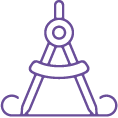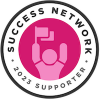Change CSM focus while keeping behviour and comp
Options
Ido Barnoam
Member Posts: 22 Thought Leader 









Hi everyone
We are looking for ideas on how to change the focus of our csm's to increase adoption while still keeping (mostly) their current behavior.
Some background:
When it comes to customer use cases, we have use cases that generate revenue, and some that don't. We want our CSM's to focus more on those that do generate revenue when they speak with customers, so customer adoption would lean more towards those use cases.
The challenge is to change the focus while not changing (dramatically) their current behavior. This means not changing any compensation plans, so their role of a "trusted advisor" would be kept and they won't need to "sell".
Would love to hear any suggestions or ideas you have.
Thanks!
We are looking for ideas on how to change the focus of our csm's to increase adoption while still keeping (mostly) their current behavior.
Some background:
When it comes to customer use cases, we have use cases that generate revenue, and some that don't. We want our CSM's to focus more on those that do generate revenue when they speak with customers, so customer adoption would lean more towards those use cases.
The challenge is to change the focus while not changing (dramatically) their current behavior. This means not changing any compensation plans, so their role of a "trusted advisor" would be kept and they won't need to "sell".
Would love to hear any suggestions or ideas you have.
Thanks!
Tagged:
0
Comments
-
@Ido Barnoam...maybe it's the legacy sales person in me, but I do feel that comp drives behavior. I'd be curious to understand how you pay your teams today? What are their existing OKRs? If you don't want to change comp, have you thought about spiffs? My larger question is why are they not pushing the use case that generates more revenue? Is it an enablement issue where folks aren't aware that it generates the most revenue? Is it enablement in it's outside of their comfort zone and they need more training on it? Is it a bandwidth issue? Happy to take this offline and have a convo if it would help!
1 -
I don’t see why selling is perceived as a violation of being a trusted advisor. The role of CSMs is to sell clients on taking a certain direction. We all sell to some degree and it’s inline with building trust if you are helping clients achieve value.All that said, it seems that you want to your CSMs to focus on a certain action so either set a goal around that which will be measured and/or do a SPIFF to drive the right activity. That way you don’t need to change overall comp.2
-
Your concern about unintended consequences from changing incentives is a valid one, @Ido Barnoam -- about 40 years of research in Self-Determination Theory shows that extrinsic rewards indeed alter behaviors. Surprisingly, the research has shown that contingent rewards reduce engagement, persistence, curiosity, proactivity, creativity, flexibility, cooperation, integrity, and happiness. These are all behaviors we want to increase in Customer Success, not degrade.
In addition, studies have shown that trust erodes when one party suspects the other of having a conflict of interest. Surprisingly, even subtle cues have a significant effect. And in the business world, buying and selling are presumed to be adversarial, in fact, procurement professionals are specifically trained on how to negotiate to their advantage when working with vendors. So even the appearance of "selling" indeed reduces trust.
Add to this the fact that CSMs, unlike salespeople, have what researchers Richard M. Ryan and Edward Deci call a smaller "locus of causality." In other words, assuming market demand, a competitive product, and a fair quota number, salespeople can always find and close new deals, but a CSM has far less influence on renewals and expansions. They're limited by issues of fit, product, service, policies, price changes, "white space," customer changes, etc. From a complex systems perspective, this difference is easily seen by quantifying the reasons customers themselves give for renewing, canceling, and expanding--CSMs can typically impact only about 30% of the outcome.
My suggestion is this:- Analyze the cause-and-effect relationships between what specifically CSMs do and resulting customer behaviors (churn, renew, expand). This requires careful experimental design, collection and analysis of data, specifically Pareto analysis, factor analysis and regression. You can show in real, compelling $ the economic impact your CSMs make to your CEO, CFO, and board of directors.
- Use the critical few factors and supporting activities as team KPIs, tracking and improving them. Here, management reinforcement and certain short-term, team-based rewards for adopting new behaviors makes sense because you can leverage social influence. When your team members see they can directly impact KPIs that lead to end results (i.e. within their "locus of causality"), they will become more motivated to do so.
- If expansion/NRR is a priority, then focus on building sustainable behaviors that lead to the outcome, don't reward the outcome itself. For example, you can train CSMs to listen for, qualify, and hand off CSQLs in a transparent way, one that doesn't erode the customer's trust (contact me for details on this). To reinforce the behavior and make it a habit, my clients do offer small incentives (e.g. $200-$400/qualified lead) or other short-term rewards, but nothing life-changing, and carefully avoiding any quotas that lead to dysfunctional behaviors.
0 -
Hi Ido,
Curious to know how the CSMs are evaluated/compensated.
The CSMs at my company are evaluated by NDR(NRR). It's all up to them how to maximize the metric.
Some do work hard to reduce churn, while others try to upsell/cross-sell because they already know some of their customers churn.
Also, I would like to know how is the expected churn rate & NDR different across use cases.
1 -
Hi @Ido Barnoam - that's literally the space I fill. I work with NGO's and serve customers across all our value channels. Development of 1) complete customer profiles and 2) strategic playbooks to administer after properly identifying what segment they reside in (and their total value to you) is what've I've done. The strategies are calculated by corresponding measurement weights. We include such things as referrals a customer has brought in, any positive mentions of our company in social media (ie. Tweets and their total number of impressions) etc. I believe it's easier to pivot a CS's department mentality when you can demonstrate that moving on, or scaling back, from customers that don't spend, nor champion your organization, are honestly in the best interest of the team because all the work they put in isn't being appreciated.0
-
@Ido Barnoam I see there has been some good suggestions here already. I fully agree with "compensation drives behavior". If you are not in the position of changing any comps at this time, one idea is to position is a trial effort for some time, maybe 6 months. Ask your CSMs to focus on the revenue use cases, with the objective of gathering data towards future changes to the comp plans.
Javed Maqsood
Javed Maqsood
Advisor, Mentor1 -
Thanks for the replies, everyone.
I really wish GGR had the ability to create threads within a discussion, so I could answer each one personally. Since it's not the case I'll try to answer in General.
The way our csms are currently measured by several KPIs: logo retention, NRR, adoption, and NPS. some KPIs are tied to a yearly team bonus and some don't.
@Michelle Wideman I think your point about making sure the relevant use cases not being well-known enough makes sense. And we would look into educating our team about that and come up with more enablement activities to increase the profile of those use cases.
We are thinking about various types of Spiffs - yes. The points @Ed Powers
raised concerning short/medium term rewards though really resonate with us so we want to be very precise with these, and use them only if we don't have other better ideas.
@Ed Powers to your point about CSQLs, we are also actively building this process now unrelated to the efforts we want to invest in focusing on revenue-generating use cases.
@Yuya at Commune As mentioned above our csms are being measured on NRR and also adoption. Generally speaking, we focus more on increasing adoption (up-sell and cross-sell) as opposed to reducing churn, and that's exactly the behavior we want to keep.
Today though, there is no focus on specific revenue-generating use cases so the csm might increase adoption, but not necessarily the overall revenue. So your point about emphasizing this to our csms also resonates with me.
@kmulhalljr thanks for sharing! The idea is very interesting.
I think that in this particular case we don't want to change the focus on customers but rather the focus on use cases across all of our customers and segments. LMK if I understood your point correctly
I appreciate your input and ideas and am happy to continue the conversation offline or here if anybody has more questions/ideas
1
Categories
- All Categories
- 179 GGR Information
- 154 GGR Cafe
- 19 Welcome to the Community
- 6 Badge and Rank Program
- 187 Specialized Groups
- 18 Future Customer Success Professionals
- 770 CS Conversations
- 189 CS Conversations
- 32 CS Operations Conversations
- 270 CS Org Conversations
- 29 Industry Insights
- 192 Strategy & Planning
- 58 Customer Journey
- 714 Technology and Metrics
- 276 Digital CS (Engagement Programs)
- 201 CS Technology
- 237 Metrics & Analytics
- 17 Value Realization











